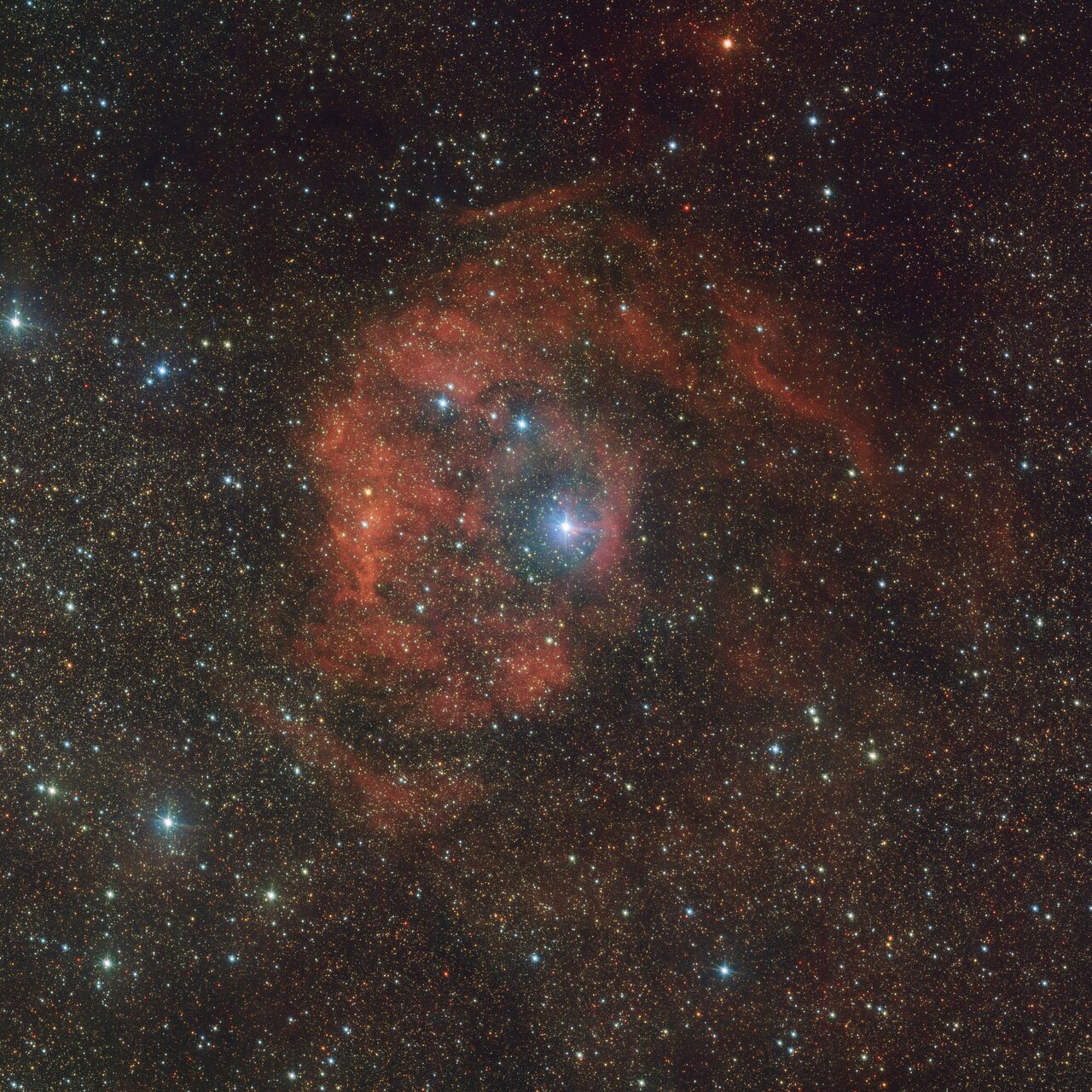Cosmo Sh2-46
In space, not everything is what it seems. This Picture of the Week shows the nebula Sh2-46, also named Gum 80, situated roughly 6000 light-years away. The strong red hues of Sh2-46 might be beautiful, but they hide an impostor.
The big blue-white star at the centre of the image is HD 165319, an O type star, one of the brightest, but rarest types of stars in the Universe. The star is largely responsible for the striking red tones around it, caused by the ionisation of the hydrogen atoms that make up the nebula. This star, however, should not be here.
Astronomers think that this star was born somewhere else: in the nearby Eagle Nebula. Located in the tail section of the Serpens constellation (the snake), the Eagle Nebula is full of star-forming regions. Once born, these stars become bound by gravity, creating a giant open cluster. Sometimes, though, a few of them become disentangled, embarking on a solitary mission through space that can lead them to infiltrate other unrelated nebulae. A bow shock next to HD 165319 seems to indicate that the star is currently plunging through Sh2-46. Perhaps this nebula will end up looking differently if the star ends up leaving it behind…
This highly detailed picture of Sh2-46 was taken by the VLT Survey Telescope (VST), which explores the sky in visible light. Currently owned by INAF, the Italian National Institute for Astrophysics, the VST is located at ESO’s Paranal Observatory, in Chile. This image is being released on the occasion of the 100 years of the Planetarium, with a full-dome version being shown at the ESO Supernova Planetarium & Visitor Centre.
